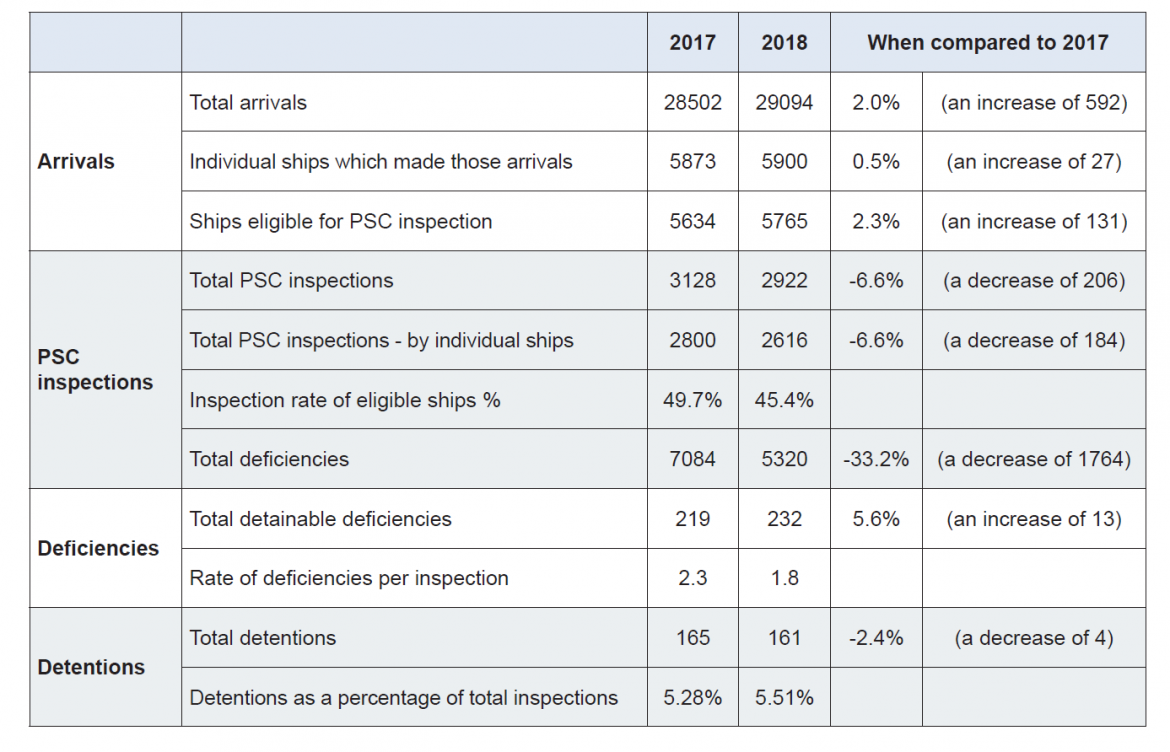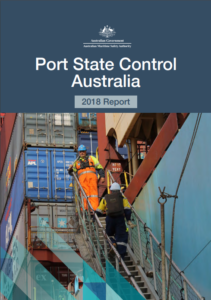Australia Maritime Safety Authority published its Port State Control for 2018, exerting a positive influence on the quality of vessels arriving in Australia. AMSA has approximately 60 marine surveyors across Australia that conduct PSC inspections and every year AMSA publishes a report on the results.
As Australia is a nation surrounded by water, it relies on sea transport for 99% of its trading.
The PSC inspection results for 2018 indicated a slight increase in the detention rate of vessels to 5.5%. Despite a similar number of detentions in 2017, 2018 had a significantly lower
rate of deficiencies with an average of 1.8 deficiencies per inspection.
The small variance in the detention rate and decrease in deficiencies per inspection emphasises the benefit in maintaining a consistent and rigorous PSC inspection regime.
Ships and operators with a record of poor performance can be banned from entering or using Australian ports under section 246 of the Navigation Act 20121. In 2018, AMSA banned three ships for periods ranging from 3 to 12 months. Two of these bans involved significant breaches of the Maritime Labour Convention, 2006.

In 2018 summary of PSC activity, during the calendar year there were:
- 29,094 ship arrivals by 5900 foreign-flagged ships
- 2922 PSC inspections
- 161 ship detentions.
- Bulk carriers accounted for 49.3 per cent of ship arrivals and 54.3 per cent of PSC inspections.
- PSC inspections were carried out at 51 Australian ports.
- The average gross tonnage per visit was 51,808 GT compared to 51,612 GT in 2017.
- The average age of vessels in 2018 was 10 years, compared to nine in 2017 and 2016.
The key points presented in the report are that the number of initial inspections decreased in 2018.
In 2018, the number of foreign-flagged arrivals increased by 592 (2.0%) to 29,094 arrivals by 5900 individual ships, representing continued growth in the number of ships arriving in Australia.
The number of PSC inspections conducted during 2018 decreased by 206 (6.6%) to 2922 inspections.
There was a 33.2% decrease in the number of deficiencies from 7084 deficiencies in 2017 to 5320 deficiencies in 2018. There was a slight increase in the number of detainable deficiencies by 5.6%, from 219 in 2017 to 232 deficiencies in 2018.
The number of detained vessels was 161, four fewer (2.5%) than the 165 detentions recorded in 2017.
There was a significant decrease in the average number of deficiencies per inspection from 2.3 in 2017 to 1.8 in 2018, with the detention rate increasing from 5.3% in 2017 to 5.5% in 2018.
The deficiencies per inspection are at record lows having steadily decreased over the last decade.
The overall picture reflects the fact that AMSA seeks only to issue a deficiency where it is necessary. It is also a strong indication that AMSA’s PSC regime is exerting a positive influence on the quality of ships arriving in Australia.
For more information, you may click on the PDF herebelow































































